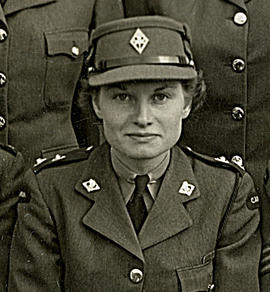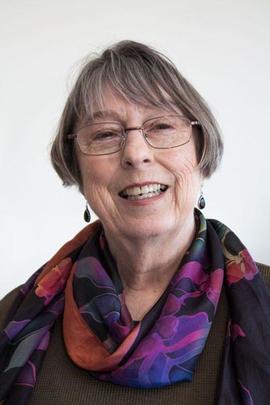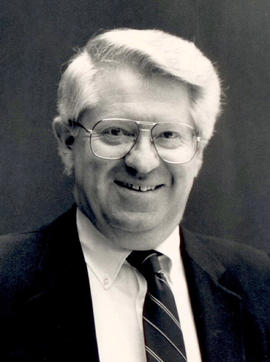Gary Runka’s contribution to land inventory, agriculture, natural resource management and land use planning helped shape British Columbia land use policy over five decades. Best known for his guiding role in the creation of BC’s Agricultural Land Reserve (ALR), Gary Runka was the first General Manager of the Land Commission and later Chair of the (renamed) Agricultural Land Commission. Throughout his career, Gary remained committed to field knowledge as the basis for understanding and resolving land and water use issues. Described by colleagues as “one of the most highly respected agrologists in our profession” and “one of [BC’s] most dedicated and influential land use planners”, Runka spent his 52-year career working on an incredible number of landmark projects in British Columbia.
Gary Runka was born August 2, 1938 and grew up in Baldonnel, near Fort St. John in the Peace River area of British Columbia. Growing up on a farm homesteaded by his parents, Bill and Velma Runka, Gary developed an early and deep connection to agriculture and the natural environment. Gary played baseball, hockey, curling and later in university, football. He married Celia Runka née Zitko (31 Dec. 1938 – 6 Feb. 2014) in 1962 and they had two daughters, Shaundehl Marie and Cayla Renee. The marriage ended in 1973.
Gary’s early employment included work on legal land surveys and a petroleum exploration survey. These experiences tweaked Gary’s interest and steered him toward a career in land science and management. He attended the University of British Columbia, graduating in 1961 with a Bachelor of Science degree in Agriculture majoring in Soil Science. Upon graduation, he took a position as Pedologist with the BC Department of Agriculture in Kelowna (1961-1966), mapping soils throughout the province and providing soil and land use interpretations for tax assessment, forest management, irrigation engineering and agricultural development. He briefly interrupted his career to complete a Masters of Science degree in Natural Resource Management and Land Use Planning from Cornell University, graduating in 1967. Upon returning to British Columbia and the BC Department of Agriculture, he was appointed BC Land Inventory Field Coordinator (Agriculture and Forestry) for the Canada Land Inventory program (1967-1973). In 1968, Gary became the owner of a cereal/forage seed/oil seed farm near Fort St. John, which included part of the family farm. He continued to manage this farm until generational transfer in 2005.
In 1972, the people of British Columbia elected an NDP government. Among the several significant programs the new government introduced, including a government-owned vehicle insurance company (ICBC), a provincial ambulance service and a community college system, arguably the most dramatic and controversial of all was the “land freeze” imposed on December 21, 1972 (OIC 4483/72). Intended to protect what remained of BC’s scarce agricultural land, OIC 4483/72 and its companion OIC 159/73 (January 18, 1973) halted further subdivision and non-farm use of farmland in BC. The subsequent passage of the Land Commission Act on April 18, 1973 began the process of designating approximately 47,000 square kilometres (18,000 sq mi) of land with the soil/climate combination to support food production as BC’s Agricultural Land Reserve (ALR). At the time, it was considered the most progressive piece of planning legislation of its kind in North America and to this day, continues to remain a model looked to by many other jurisdictions that continue to lose their valuable agricultural land to non-farm development.
Gary Runka was appointed the first General Manager of the BC Land Commission via Order in Council 2570/73 on August 1, 1973, about 2.5 months after the appointment of the original five-person Commission. A combination of background, education and work experience made Gary uniquely qualified to guide the Commission through its formative years. He held this position until July 24, 1975 when he was appointed Member and Chair of the then renamed Agricultural Land Commission (OIC 2445/75), replacing W.T. Lane, the first Commission Chairman.
During this period, Gary married his second wife, Joan Marie Sawicki (18 Sept. 1945 – present). They had met while both were working with the Canada Land Inventory and Joan subsequently joined the staff at the BC Land Commission to work on the original ALR boundaries.
Gary never wavered in his dedication to safeguarding BC’s agricultural land resource. In 1979, when the government overruled the Land Commission and allowed the exclusion of over 250 acres from the ALR in Langley for industrial development, Gary stuck to his principles and resigned. The ensuing controversy damaged the reputation of the political leadership but was eventually regarded as one of the contributing factors to the continued survival of the ALR.
Upon leaving the Agricultural Land Commission, Gary established his own consulting firm, appropriately named G.G. Runka Land Sense Ltd. Joan was a business partner in the company until her election in 1991 as an NDP Member of the Legislative Assembly of British Columbia, representing Burnaby-Willingdon. During Joan’s decade as an elected MLA, Gary’s daughter Shaundehl worked with him on Land Sense Ltd. projects.
Over the next 34 years, Gary worked with 681 clients, including all levels of governments, corporations, First Nations, non-government organizations, learning institutions and private individuals. Whether the project was land inventory, community planning, environmental assessment, policy development, land and water use regulation or resource use conflict resolution, Gary always approached planning from the ground up, combining his understanding of natural systems and ecological processes with his diplomatic skills at bringing people of diverse opinions together to solve problems in the long-term public interest. Gary was recognized as a skilled and respected facilitator of complex land use planning issues throughout his career. He left a great legacy to the land, water, and people of British Columbia by helping decision makers and communities make good decisions and establish good policies.
It was just such talents that The Nature Trust of British Columbia needed for an innovative project they undertook during the 1990’s. In an effort to conserve some of the unique biological resources of the South Okanagan, one of the three most endangered ecosystems in Canada, the Trust purchased a number of small private holdings along with three ranches that included substantial associated Crownland grazing leases and licenses. The big challenge then was to derive an overall management plan for the thousands of acres of secured habitat. Gary Runka was ideally suited to the task. After countless collaborative days and months spent sorting out land status designations, reaffirming resource capabilities and resolving competing objectives of diverse interest groups, the final product, which Gary coined "Biodiversity Ranches", was heartily endorsed by all of the stakeholders - including the ranchers who are still managing these properties today.
During the 1990s, Gary also played a key role in yet another ambitious BC land use planning initiative, the Commission on Resources and the Economy (CORE) and subsequent Land and Resource Management Plans (LRMPs). As facilitator for several of these processes, including in the East Kootenays, Bulkley Valley, Anahim and Charlotte-Alplands, Cassiar/Iskit/Stikine and, perhaps the most challenging of all, Central Coast, Gary’s legendary geographical memory, integrative abilities and diplomatic skills helped guide these multi-sector tables to consensus. British Columbians, both present and future, will forever benefit from the doubling of parks and protected areas that was one of the key products of this monumental planning exercise.
In July 2001, after 30 years of residency in Burnaby, Gary Runka and Joan Sawicki embraced a lifestyle change, moving to Stuie, BC, in Tweedsmuir South Provincial Park, while retaining an urban base at their Vancouver condominium. Gary and Joan continued their G.G. Runka Land Sense Ltd. consulting work in addition to their involvement in numerous professional and grassroots organizations.
On July 26, 2013, Gary Runka died suddenly and unexpectedly while walking with Joan near their home in Stuie. At the time of his death, Gary was preparing his expert witness testimony in defense of the prime agricultural lands that would be lost with the building of the Site C dam near Fort St. John - a mere few kilometres away from the farm where he grew up. Gary was honoured posthumously for his contributions to sustainable land use in BC with the 2014 Land Champion award from the Real Estate Foundation of BC. Throughout his career, he was also the recipient of the B.C. Institute of Agrologists’s "Agrologist of the Year" award in 1978 and a Fellowship with the Agricultural Institute of Canada in 1990.


